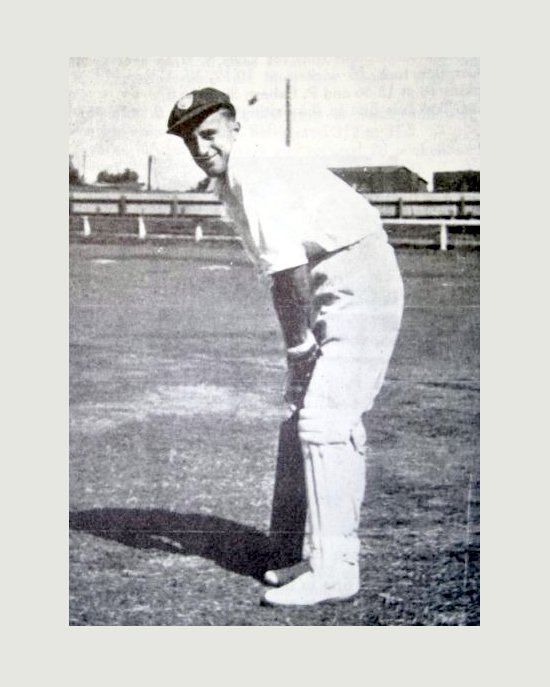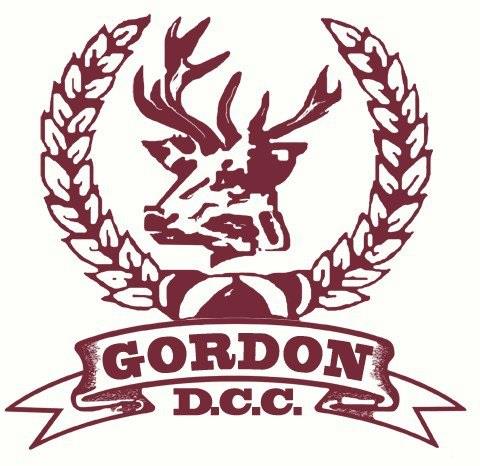Gordon’s highest run scorer in First Grade – Sid Carroll
Gordon District Cricket Club | April 20, 2025

Sid Carroll lived at 25 Horsley Ave Willoughby and went to school at Marist Brothers High School in North Sydney. According to his war record, which he personally signed, Sid Carroll, was born on June 12, 1921. His war record also shows his name was spelt Sydney Carroll and not Sid.
Apparently early in his cricket career, a scorer decided his name was Sid and for his entire career and life after cricket he was known as Sid. ESPNcricinfo and Wikipedia have his birthdate as 28th November 1922. As Sid enlisted on 14 May 1941, maybe he wanted the AIF to think he was 20 rather than 18 and ½ which required parental approval? This was not uncommon.
After spending 18 months in Australia in training. Sid arrived in Port Moresby on 18 December 1942 and went straight into battle at Milne Bay with the 61st Battalion. He was part of the famous battles that inflicted the first defeat on the Japanese in a major battle on land during the war.
After a short break at home where he got in four matches for Gordon, Sid was sent to Bougainville where he remained as part of the 61st Battalion until the end of the war.
Sid returned to Australia on 12 June 1945 after two and a half years in the mosquito infected New Guinea and Borneo. He suffered significantly from malaria and his bouts had made him very weak. He was sent to the Lady Gowrie Red Cross Convalescent home in Gordon from 10 September 1945 to 8 October. While he had not fully recovered, Sid considered this his pre-season preparation as he went on to play seventeen games in the 1945-46 season, scoring 456 runs at 30.40 with a high score of 83 as well as playing for NSW.
Sid was known for his skill as a top-order batsman and came into a strong NSW team including Sid Barnes, Jack Fingleton and Bill O’Reilly, gaining recognition for his solid technique and elegant stroke play.
He quickly established himself as a consistent batsman, displaying remarkable reliability and precision. Over his career with New South Wales, Carroll proved himself with a series of solid performances, accumulating runs consistently in a fiercely competitive era.
Though Carroll did not achieve international fame, he was deeply respected within New South Wales cricket circles. His role in Australian cricket was one of quiet reliability and dedication to his team, representing the hardworking state players who contributed to the strength and spirit of Australian cricket in the pre- and post-war periods. Carroll’s career reflects the commitment of Australian cricketers of his era, whose passion for the game endured despite the challenges of their time.
The 1945-46 Gordon Cricket Annual Report explained:
S. Carroll secured the aggregate and was third in the averages scoring 456 runs at an average of 30.40, This is a good performance and is enhanced by the fact that on several occasions Sid took the field suffering from attacks of malaria which was contracted in Bougainville. He also represented your club as an opening batsman for New South Wales.
Sid had seven seasons between 1945 and 1957 where he scored more than 500 runs. His season of 723 runs in 1948-49 was described in the Annual Report as follows:
S. Carroll gaining first place in the batting averages and obtaining the aggregate of the New South Wales Cricket Association had an eminently successful season scoring 723 runs at an average of 48.20. An opening batsman, he was very consistent and always contributed to giving his side a good start. His performances, season after season, stamp him as one of the State’s leading opening batsmen and one wonders why he isn’t persevered with in first class cricket, where openers are in short supply.
Other quotes from various sources, including Gordon’s Johnny Moyes, indicate his prowess:
Even in defense, his strokes were so elegantly produced that they held interest for the cricket-lover. The resemblance to Kippax was heightened by Carroll’s practice of wearing the shirtsleeves rolled only to below the elbow (not above it as is generally the custom) (Kneebone, 1949)
Carroll is a grand player who has been wasted. A brilliant stroke-maker, he might well have opened for Australia if the New South Wales selectors had not tossed him about like a shuttlecock. (Moyes, 1952)
A right-hander with a slightly crouched stance, his footwork is correct and decisive and his reflexes very quick. When he makes up his mind to move to a ball, he plays his stroke with precision and good timing. (Kerville, 1952)
Sid Carroll is the Club’s highest run scorer in First Grade with 11,322 runs at an average of 35.76, with 19 centuries, playing from 1939 to 1966. An indication of his prowess is the fact that the next highest is Charlie Macartney with 7,984 runs. Sid played forty six times for NSW and was very unlucky not to play for Australia. He scored 2,811 runs for NSW at 39.59 with six centuries.
The career of Sid Carroll as a cricketer is well known, and it will take an amazing performance for another player to reach his First Grade runs scored. However, Sid’s role in the Australian offensives in Milne Bay and Bougainville cannot be underestimated as this was a most difficult campaign, the soldiers being constantly subjected to wet conditions in muddy fields and jungles. It was only the expertise of the Australian doctors at the time that allowed our forces to continue their push to rid the island of the Japanese forces. Like many others, Sid suffered significantly from malaria recurrences but recovered sufficiently to return to the front line and assist his 61st battalion to become one of the most decorated battalions in the war in the Southwest Pacific.
In total, Sid spent 1,592 days in the service during the war with 742 served in Australia and 730 served overseas. Like in his cricket he was ready to open the batting for his battalion as they led the way to many victories in New Guinea and Bougainville.
Sid died on 12 October 1984 aged 63 or was it 61 and a half. We may never know.








